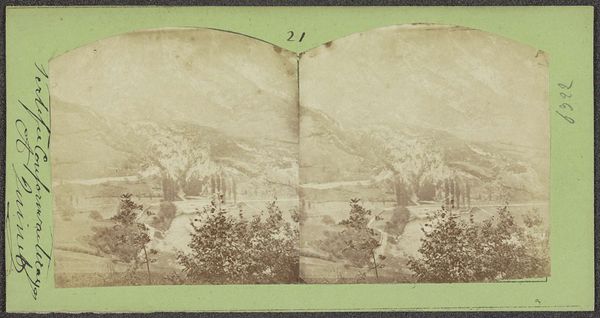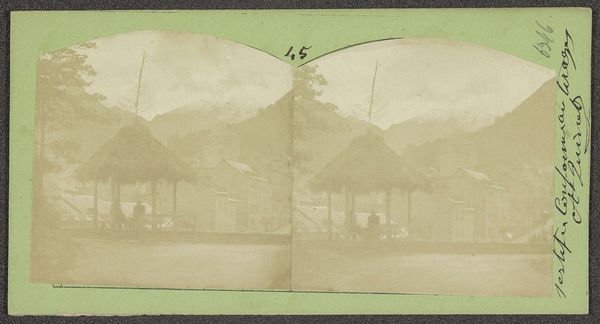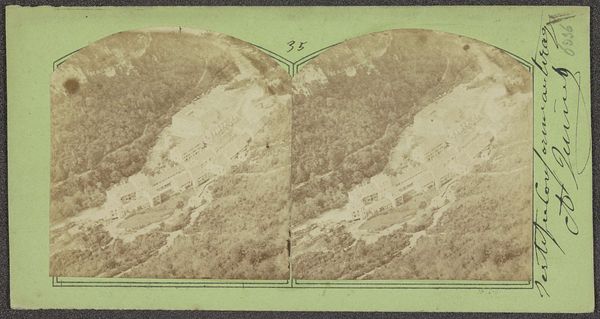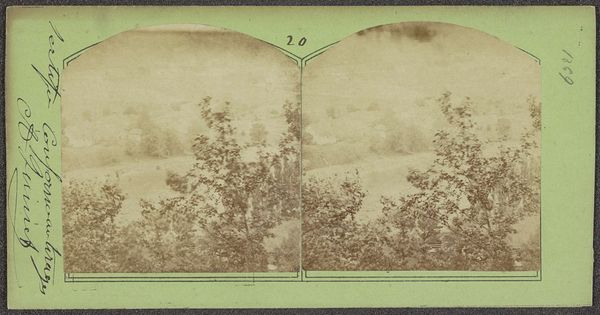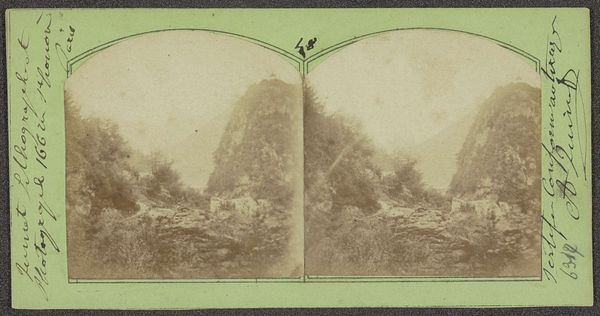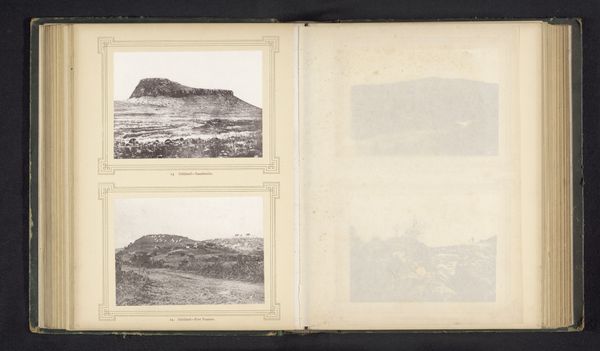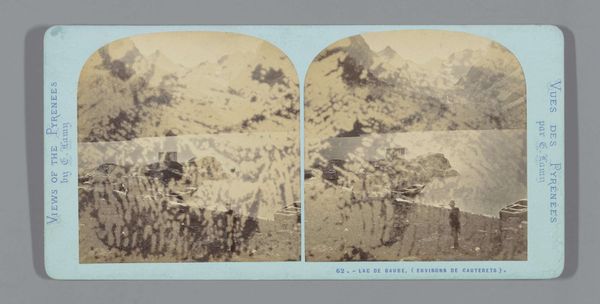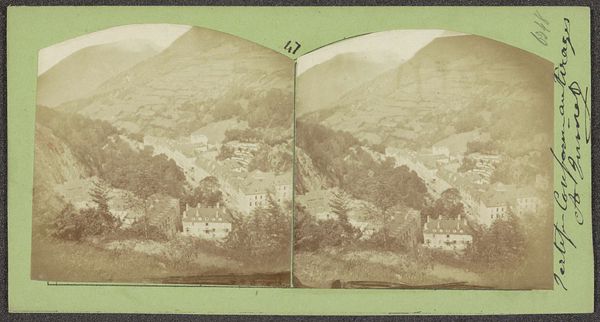
Voet van de Alpen met een staand voorwerp op de voorgrond c. 1860 - 1880
0:00
0:00
Dimensions: height 90 mm, width 171 mm, height 76 mm, width 74 mm, height 76 mm, width 74 mm
Copyright: Rijks Museum: Open Domain
Curator: Today we’re looking at “Voet van de Alpen met een staand voorwerp op de voorgrond,” or “Foot of the Alps with a standing object in the foreground," an albumen print photograph by Achille Quinet, dating from around 1860 to 1880. Editor: It's haunting. I'm immediately struck by how indistinct everything is, how the lack of crisp detail gives a feeling of impermanence. The standing object – what is it? – looks almost spectral against the mountain backdrop. Curator: It's interesting you say that. The albumen print process itself contributes to that effect. It involved coating paper with egg white and silver nitrate, making it sensitive to light. The resulting image often has a softened, ethereal quality. And yes, the standing object… it seems to be a piece of furniture, abandoned there. Editor: An abandoned object in such a vast landscape…it speaks volumes about human intervention in the natural world. What was the purpose of bringing such a homely piece of furniture to this specific location? Perhaps something as straightforward as early tourism, framing a picture within a picture. It's inherently about class and leisure. Curator: The contrast is striking, isn't it? We see evidence of a deliberate act of placement here, the human-made sitting awkwardly in the shadow of millennia of geological formation. Speaking to its social context, such images became popular souvenirs for tourists exploring the Alps at the time. It provided a material way of holding the vast sublime space that was then easily available for wealthy consumers to bring back with them to the private space of their domestic dwellings. Editor: This makes me think about labor involved with its creation, but also its consumption. It isn’t just about Quinet, the photographer. It's about the workers involved in albumen production, the printing processes, the transportation. This network made consuming that sublime landscape in your own parlor possible, but in a way which abstracted that labor, and very existence of those producers. Curator: Precisely. And let's not forget the aesthetic choices. Quinet used a pictorialist style, prioritizing atmosphere and mood over precise detail. That reinforces the romantic ideals prevalent in landscape photography, perhaps obscuring a true representation of working Alps communities. Editor: Which goes some way toward framing my initial gut reaction! The pictorialist style romanticizes not only nature but the implied leisure inherent in tourism as a historical project, effectively concealing a world of very tangible production. It is a reminder of the choices and context within even what might seem a straightforward scene of natural beauty. Curator: Absolutely. When you look closely, this image holds so much more than initially meets the eye. Editor: Indeed, it leaves me contemplating our relationship with both nature and our material possessions.
Comments
No comments
Be the first to comment and join the conversation on the ultimate creative platform.

